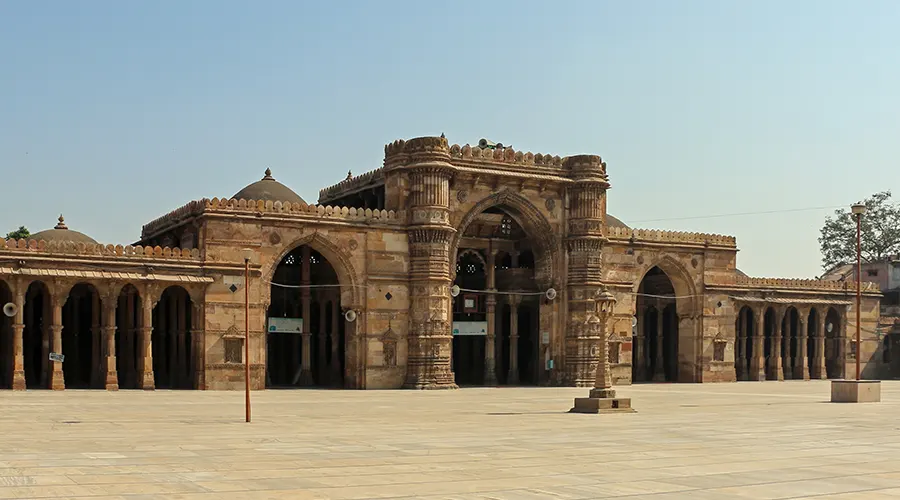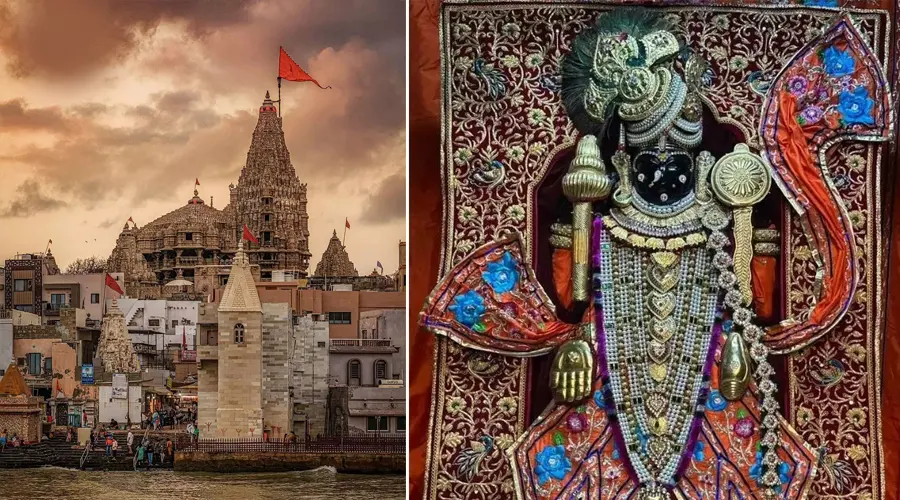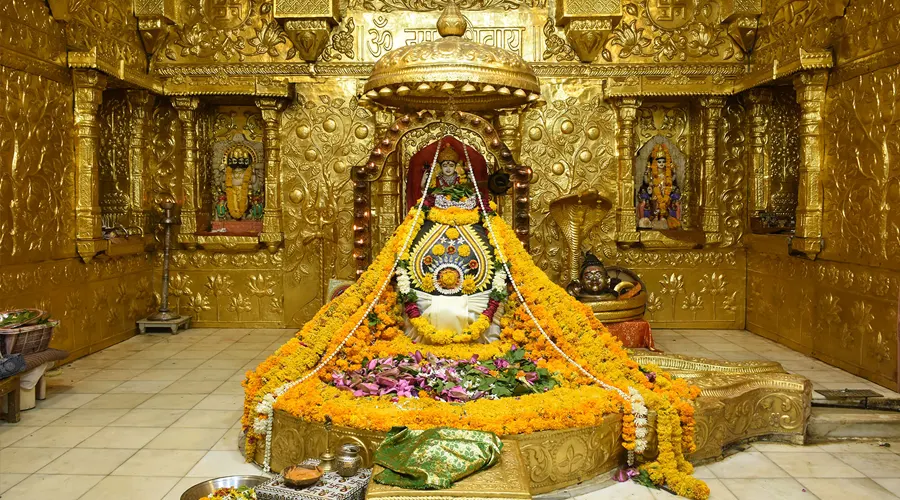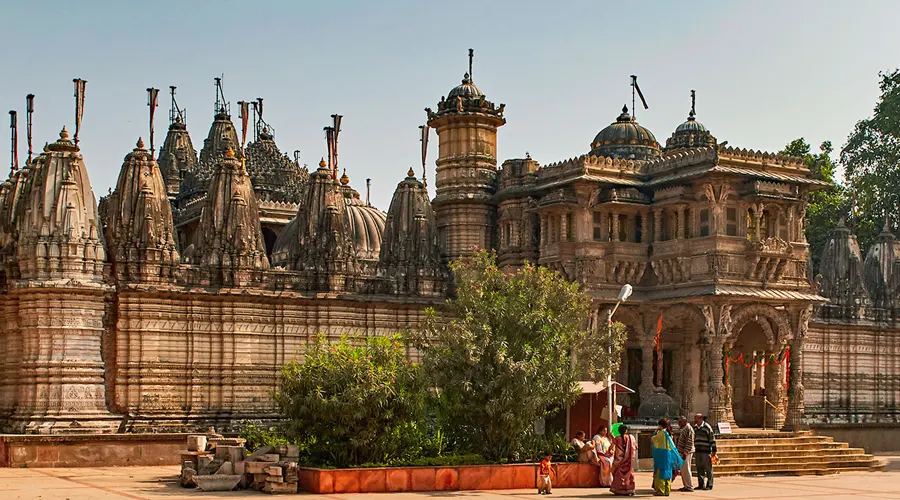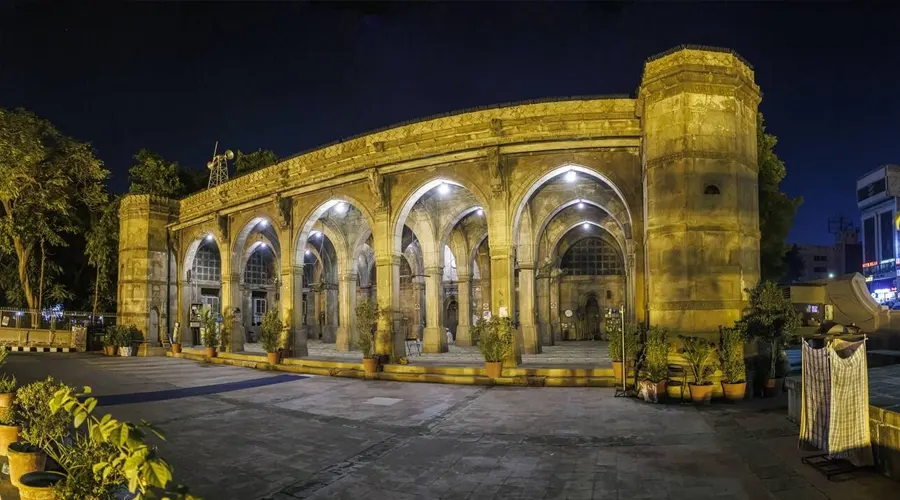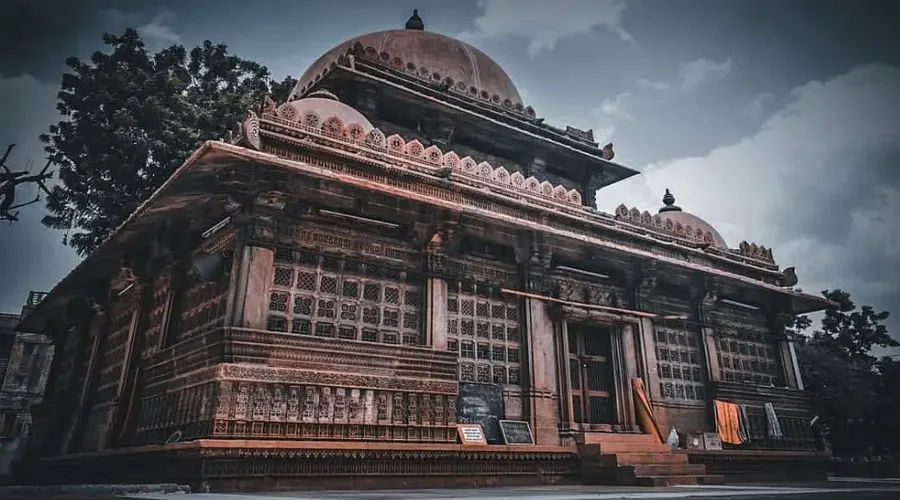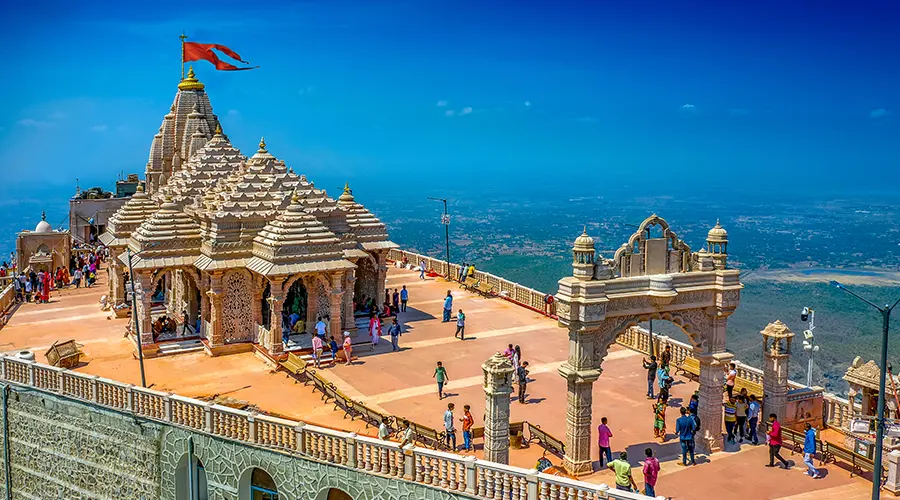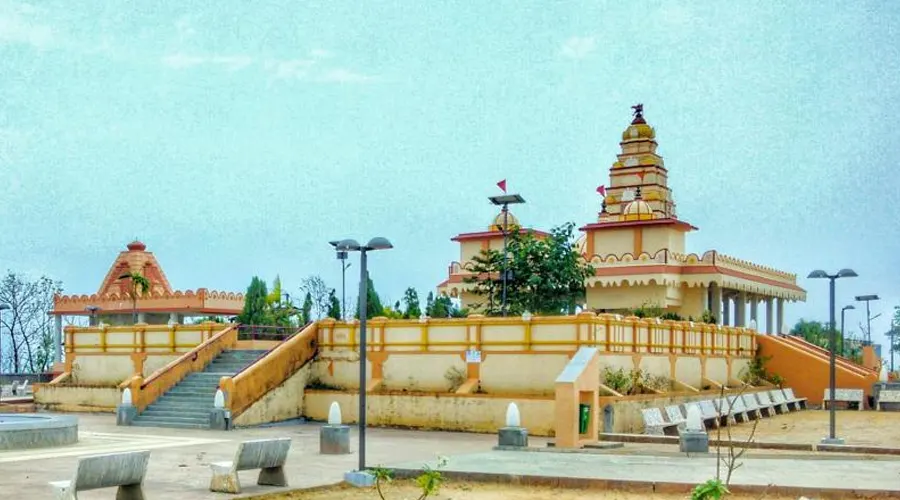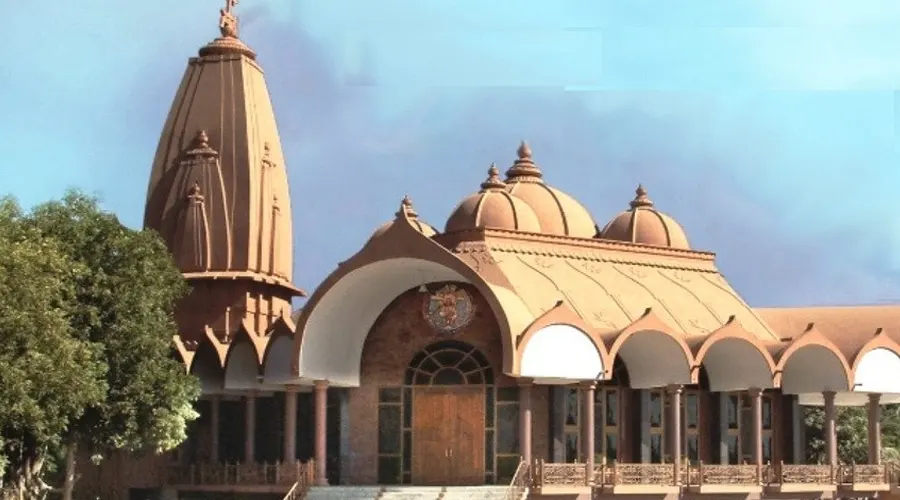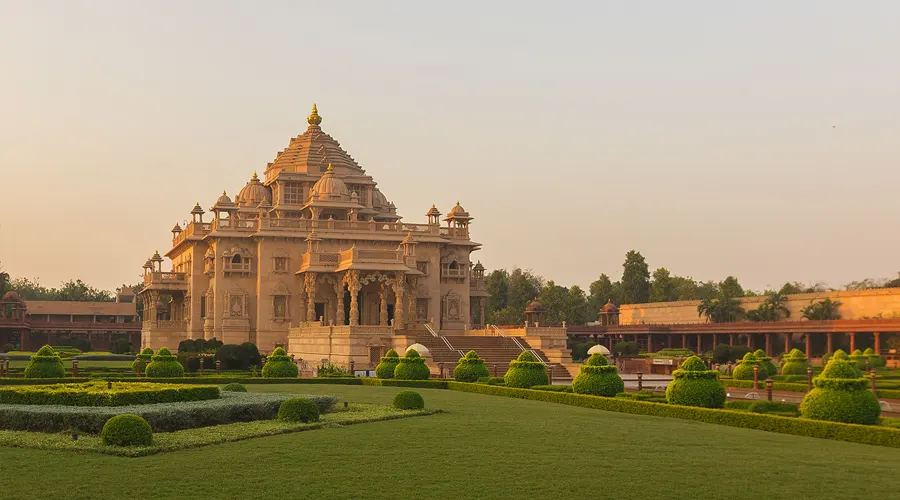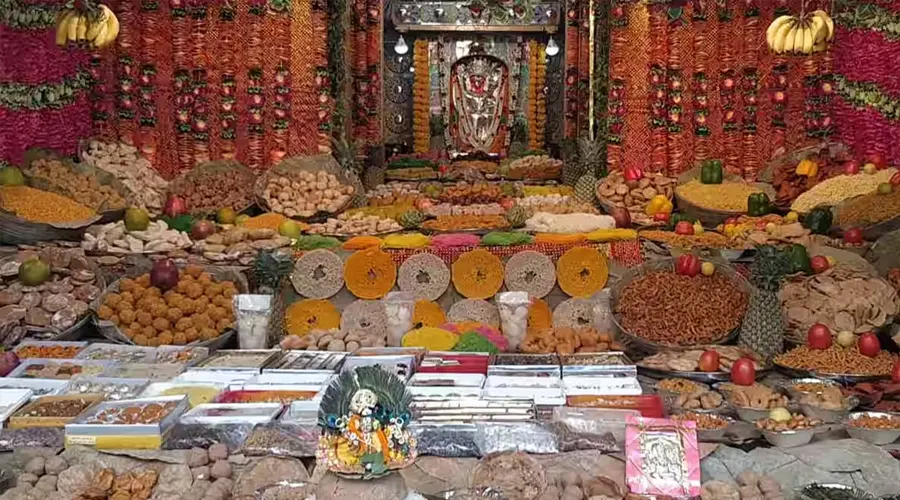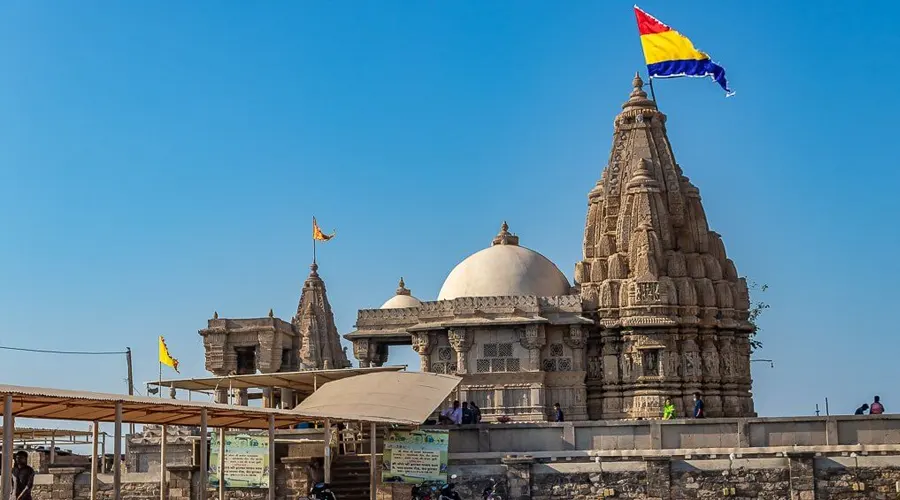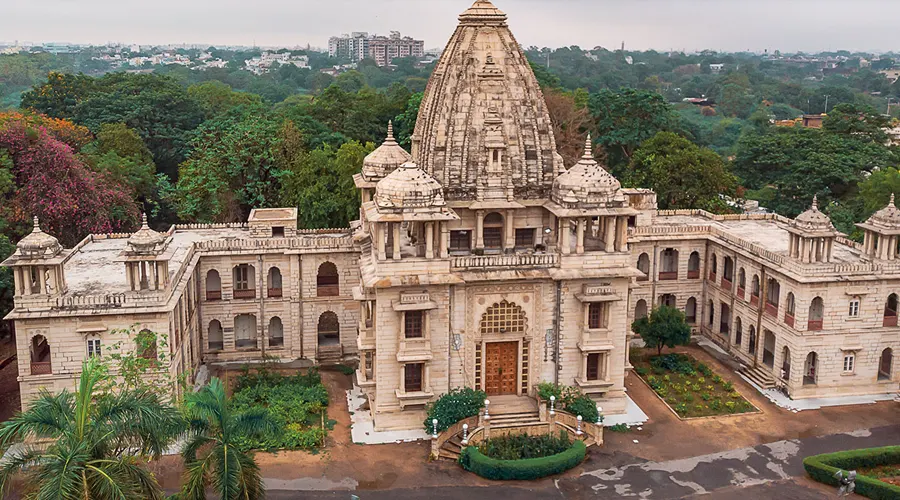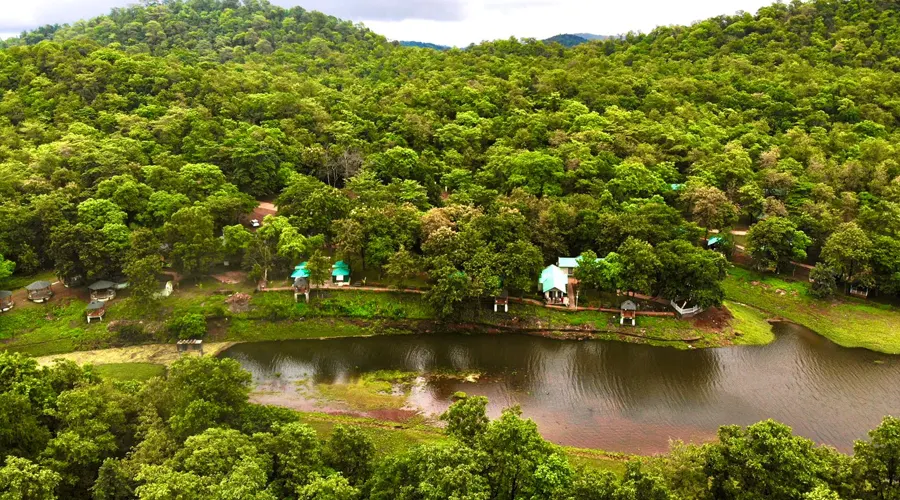Jama Masjid Gujarat
Constructed gracefully by Ahmed Shah I in the year 1423, Jama Masjid is a hollowed Islamic shrine lying within the old city region of Ahmedabad, on the western side of the Manek Chowk. Popularly known as Jama or Jumma Masjid, this beautiful monument in Gujarat is a testimony to the maturity Muslim architecture has received.
The masons who created this magnificent yellow sandstone structure ingeniously used pieces retrieved from demolished-Hindu and Jain temples- the black slab close to the arch is said to be the base of the inverted Jain idol. Jama Masjid was probably the largest mosque in the Indian subcontinent built in this period.
The exteriors of the mosque are extremely impressive. Its facades are a harmonious blend of solids and voids. The unique feature of Jama Majid is its three archways in the facade that have been skillfully balanced and placed. The interior of the mosque is illuminated by natural light filtered through a latticework screen. The Sanctuary of the mosque consists of nearly 15 domes and 300 pillars that are standing shoulder to shoulder with each other.
The spacing between the pillars of the mosque forms a series of square bays which are crowned by a domed roof. Majestic interiors are quite similar to their exteriors. Decorative details like intricate terraces, beautiful arabesque, and richly carved terraces enhance the interiors of the mosque.
History of Jama Masjid Gujarat
One of the most historic monuments in the history of the city, the Jama Masjid was one of the most anticipated mosques of Ahmad Shah I. The foundation of the building was laid down in the year 1411 and meticulous work led to its completion on January 4, 1424.
It was the largest mosque to have been built at that time and was built as an exclusive prayer hall for the royalty. The mosque suffered some damage in the year 1819 when the two principal minarets adjacent to the main arched entrance collapsed. However, their lower portions are still intact.
Architecture of Jama Masjid Gujarat
Situated in the middle of the Old City, Jama Masjid is a harmonious example of Hindu and Muslim architecture styles. Gentle lotus carvings lie akin to detailed lattice designs and blend in perfectly. The mosque is built out of yellow sandstone with the central courtyard being 75 metres long and 66 metres wide.
Evenly-spaced columns adorning Arabic calligraphy surround the main courtyard on three sides, while the fourth side has the main prayer hall. The courtyard itself is built out of dazzling white marble and has a water tank containing holy water within its confines.
The main prayer room is also rectangular and embellished with four magnificent domes. The interior, as well as the exterior, is ornamented with classical Indo-Saracenic motifs. Domes of the Jama Masjid are carved like lotus flowers resembling the Jain style of architecture, while the pillars here are carved like bells which is typical to Hindu temples. Detailed carvings embellish the 260 columns supporting the roof. The Wall of Prayer or the Qibla is beautifully decorated as well.
Towards the west of the Jama Masjid lies the cenotaph of Ahmed Shah I, his son, and his grandson, Ahmed Shah's Tomb, where you can pay your respects to them. The serenity of this place is a welcome change from the din of the bubbling city that lies just outside and is the perfect place to call upon the Divine.

